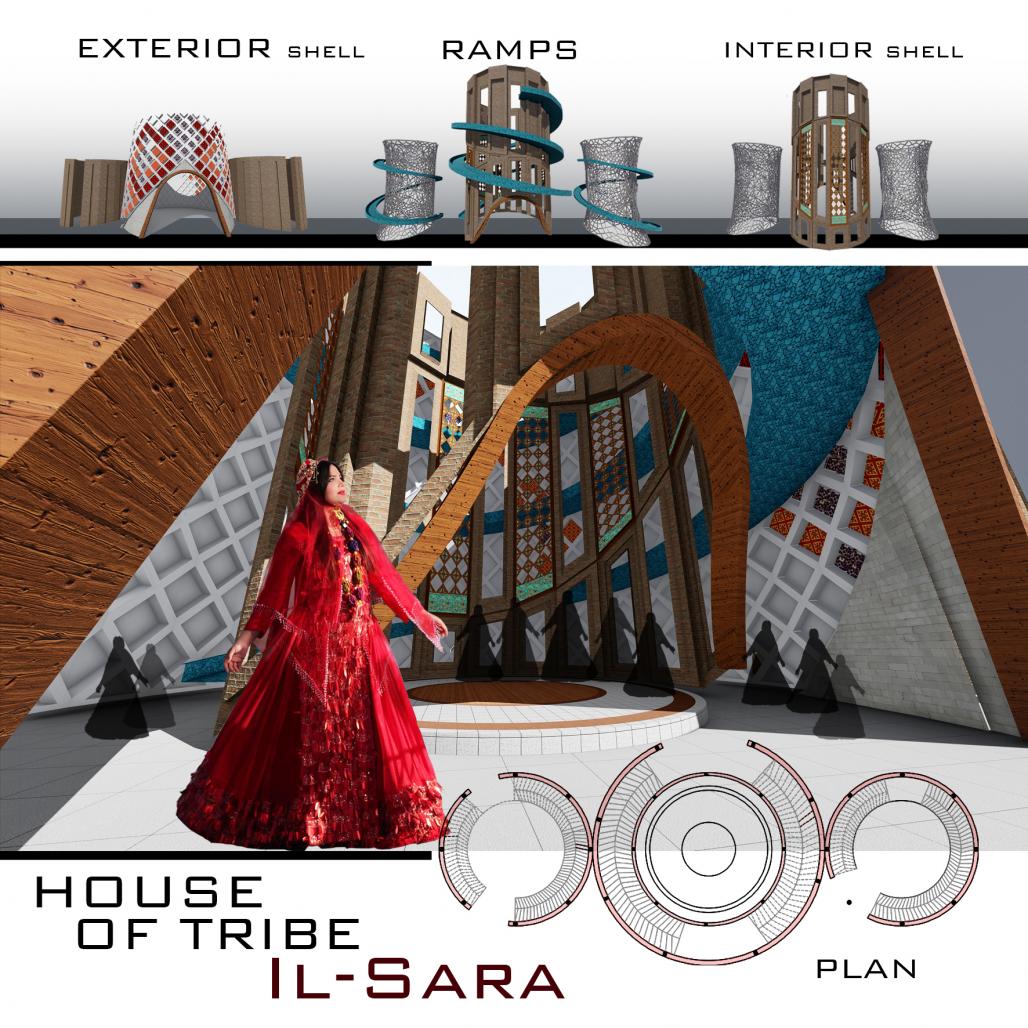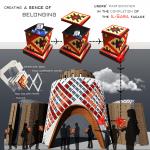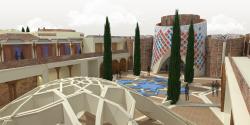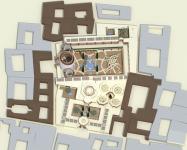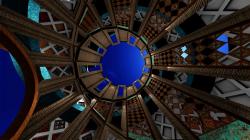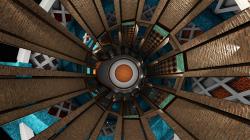Preface
The development of modern urban spaces is one of the factors that affect the improvement of the progress and socio-economic life situations of the residents. Herein, the backwardness of historical contexts and neighborhoods from the flow of cities' progress is one of the problems that we see in modern cities. The impossibility of creating urban infrastructure and the restriction on the development of communication routes in the mentioned neighborhoods have deprived residents of urban facilities. In consequence, low-income habitation in the context, cultural poverty, decreased level of security, and damage and destruction of the context of historical value may happen.
Description of the plan
The present project is located in Sang-e-Siah neighborhood, the sole survivor of the seven early and historical neighborhoods in Shiraz, Fars Province, Iran, where due to the great antiquity and decay of its context, the low-income stratum of the city resides in. Cultural, social and economic poverty in this region has caused delinquency and insecurity, which have led to a sharp decline in the number of people visiting this valuable context.
Hence, creating and developing a suitable activity platform for non-native users in the form of a mixed-use project, which can provide numerous strong reasons for daily visits of users to this neighborhood, is particularly significant. Increasing the traffic and presence of non-natives in the platform of an appropriate activity will gradually increase the security of the neighborhood and the economic level of residents, as well.
Therefore, our maximum effort was to select project uses towards recreation that can encourage users to visit the complex. However, what is the reason for users to refer to the project continuously? And is it enough to create uses to meet the users' needs?
Accordingly, in this project, in addition to meeting the daily needs of individuals by creating uses such as the Bazaar, it has been tried to lead the users to a direction in which they have a sense of belonging to the complex, which leads to their loyalty and persistence of their presence in the complex. Thus, to achieve this, we needed an idea that creates a platform for the proof of users' collective participation in the completion of some parts of the project.
As a result, two general solutions were presented:
1) Choose uses that do not exist in the region, so that they can attract more visitors from the city and even the province and the country.
• Perfume House: Fars province, especially the city of Shiraz, is the cradle of "natural sweat" due to its unique geographical location and the growth of aromatic plants in the mountains of this region. At the Perfume House, visitors can involve in the process of perfume-making by personally designing their perfume from the sweat of natural and wild plants harmonious with their moods and interests.
• House of Tribe (Il Sara): Fars province, as the birthplace of one of the authentic nomadic tribes of Iran, Qashqai, is the residence of a large number of these people. Therefore, the House of Tribe is designed as a gallery to exhibit the unique culture and traditions of the Qashqai people. The purpose is to induce a new identity to the complex and preserve their ancient culture as well as embellishing the complex. The geometry of the design is arranged as a courtyard with a circular plan in harmony with local ceremonies and activities of the Qashqai tribe, which take place around a circular axis. Also, on the facade of the House of Tribe, a pattern taken from the original designs of Qashqai handmade kilims has been designed. Moreover, Qashqai people are accustomed to holding local ceremonies in a place on a hill or on high ground overlooking the ceremony so that it can create a suitable place for the spectators. In this regard, a ramp is designed in the heart of these cylinders to be an appropriate place for both spectators and these ceremonies.
Additionally, in the design of Il-Sara (the House of Tribe), the architecture of the three domes of Fire Temple of Firoozabad has been modeled, so that the complex contains unique signs from all over the province.
2) Space should be in a way that its users can participate in its completion process and causes the creation of a greater sense of belonging to the place.
• One of the ways to increase the sense of belonging in this project is the participation of users in the completion of the Il Sara facade. In this way, for every perfume that is produced in the Perfume House, there is a unique box with a special pattern. Every pattern on these boxes is a pixel of the kilim design on the body of the House of Tribe. After purchasing the perfume, by presenting the boxes to the complex, users can install them on the body of the House of Tribe, with their names and signatures on it. By moving along the routes of the ramps in the House of Tribe, users will be able to see their own donated box and identify its installation location. Accordingly, the idea of participation in the completion of the space causes the creation of a sense of belonging to the building in visitors.
2020
0000
Project location: Sang-e-Siah Neighborhood in Shiraz/ Fars/ Iran
Design Features
- Developing a suitable activity platform for non-native users in the form of a mixed-use project
- Constructing interrelated uses where the product of one part is used in the other part
- Users' participation in the completion of some parts of the complex
- Containing unique signs from all over the province
- Paying attention to the social, cultural, and economic situations of the residents
- Creating a sense of belonging and loyalty to the complex
- Creating a gallery to exhibit the unique culture and traditions of the Qashqai people
- Inducing a new identity to the complex and preserving the ancient culture of Qashqai
- Creating opportunities for users to gain new exciting experience at the Perfume House where they can make their favorite perfume
- Providing the daily needs of users by creating uses such as the Bazaar
Hanieh Fathi
Fatemeh Lashkari
Faezeh Cheraghi
Special thanks to Dr. Seyed Mohsen Moosavi, Faculty member of the University of Mazandaran, for their valuable advice.
Favorited 8 times
